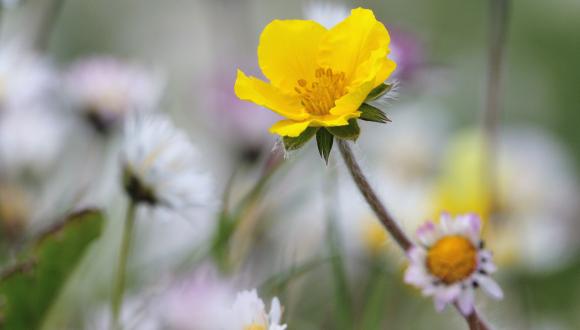Extremely rare moss rediscovered near Edinburgh
14 December 2023
A critically endangered moss has been restored at Threipmuir Reservoir, thanks to a collaboration between NatureScot and Royal Botanic Garden Edinburgh.
Scientists have been rewarded after a 13-year wait to see one of Scotland’s rarest mosses, which prefers to live in areas where other species simply cannot. Round-leaved bryum has been found by NatureScot’s Kat O’Brien, and identified by RBGE’s David Chamberlain at Threipmuir Reservoir, near Balerno, Edinburgh.
Aside from this Site of Special Scientific Interest (SSSI), where it was last found 13 years ago, there has not been a confirmed ID anywhere else in the UK since 1987. The round-leaved bryum lives in the mud by reservoirs and lochans when the water levels are temporarily low, a habitat that only appears occasionally. The reservoir is a place where experts hoped to find it again, but only if the conditions were right.
Although tiny, the moss’s ability to survive in this type of extreme habitat means it has next to no competition from other plants. However, the human stabilisation of water levels and water pollution in Scotland mean that it and some other specialist species are under threat. Since 2010, the Threipmuir had been artificially stabilised, thus removing the round-leaved bryum’s preferred habitat conditions.
Scotland has over 900 species of moss, 40 of which are listed as GB Critically Endangered and Internationally Important. They make up the rich tapestry of Scotland’s biodiversity but are often underappreciated. The State of Nature Report Scotland 2023, published in September, found that since 1970 the distributions of 62% of bryophytes (mosses and liverworts) have decreased, compared to 25% that have increased.
NatureScot’s Bryophyte, Fungi and Lichen Adviser, Kat O’Brien said:
“This incredible re-discovery of such a rare and endangered moss in Scotland shows us that there is a whole world of biodiversity that we can only see and appreciate when we take the time to create the best conditions and work to protect nature.
“Despite a number of dedicated bryologists in the UK looking for it, no one has found any round-leaved bryum in decades other than at this site, leading to its classification as a GB Critically Endangered. It is likely that this moss is losing sites faster than it is gaining new ones, and is declining on a European scale. The unique habitat it needs only occasionally appears, and it’s a good sign that the conservation work in the area is helping biodiversity.”
Bryologist at Royal Botanic Garden Edinburgh, Dr Neil Bell, added:
“Round-leaved bryum is one of our most threatened mosses, and this find confirms its continued presence at what is now its only site in the UK. Because it is specifically adapted to the temporary habitat that emerges when water levels are very low, rapidly completing its life cycle and then surviving in a dormant state in the mud for many years, the increasing artificial stabilisation of lakes and reservoirs is rapidly pushing it towards extinction in Britain. We are really excited to now have colonies of round-leaved bryum and other rare species from Threipmuir in cultivation at the Royal Botanic Garden Edinburgh. As well as hoping that they can be bulked up sufficiently for translocation, the horticulturists here are learning a lot about how to grow bryophytes generally and about the life cycle of this fascinating, critically endangered moss.”
Working with Bryologists at Royal Botanic Garden Edinburgh, NatureScot has decided to transfer some Round Leaved Bryum to the scientific greenhouses at the world-class botanical garden to build up a population that can be translocated into new sites, thus potentially securing the moss’s continued presence in the UK and lifting it from the GB Critically Endangered list. Scientists might not know for another 8-10 years whether this translocation has in turn been successful.




